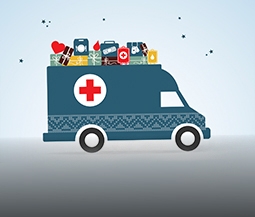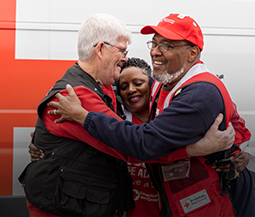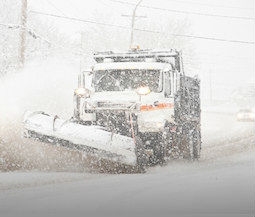WASHINGTON, D.C. August 18, 2025 — The United States is experiencing more frequent and intense extreme weather, making it more important than ever for people to be prepared for emergencies. September is National Preparedness Month and the American Red Cross urges everyone to take steps to protect their loved ones by getting their households ready now.
Last year, disasters displaced a record 11 million people in the U.S. This is the highest number for any country, accounting for roughly one-quarter of all disaster-related displacements worldwide, according to the Internal Displacement Monitoring Centre.
“Unfortunately, disasters don’t wait for the right time,” said Jennifer Pipa, vice president of Disaster Programs at the Red Cross. “They can happen in the middle of the night, during your commute or while your kids are at school. Disasters can turn your entire life upside down in a matter of minutes, and that’s why it’s more important than ever for families to be prepared.”
To help people in need, the Red Cross is now responding to nearly twice as many major disasters — at a rate of about once every two weeks versus once a month a decade ago. And, when the worst happens, Red Cross volunteers are on the ground working with local partners to provide food, shelter, comfort and financial assistance to make sure no one faces recovery alone.
TAKE THESE STEPS TO GET READY Protect your family by making a plan to stay safe, gathering important supplies and knowing how you’ll stay connected by taking these steps:
- Depending on the emergency, you may need to stay where you are or go somewhere else to stay safe. If you may need to leave, think about where you’ll go, how you’ll get there, where you’ll stay and what you’ll take with you. Plan well in advance if you’ll need help leaving or use public transportation.
- Next, gather and organize critical supplies — like food, water and medicine — into a go-kit and a stay-at-home kit. Make sure to include backup batteries and chargers for your devices (cell phone, CPAP, wheelchair, etc.), a battery-powered or hand-crank radio, and critical personal records.
- Your go-kit should include three days of supplies that you can take with you. Your stay-at-home kit should have two weeks of food and water, and a one-month supply of medications, if possible.
- Customize your kit to meet your household’s specific needs. If you have young children, don’t forget formula and diapers. If you have pets, include leashes, carriers, food, bowls, litter and a litter box.
- Finally, make a plan to reconnect with loved ones if you’re separated or if the phone or internet is down. Write down important phone numbers on a contact card and carry it with you.
Download the free Red Cross Emergency app for weather alerts, safety steps for different emergencies and expert advice in both English and Spanish. Don’t forget to sign up for local government emergency alerts to get critical local information — like evacuation notices — during an emergency.
People can also help their community be better prepared for disasters by giving blood, taking a class in lifesaving skills like CPR, or becoming a Red Cross volunteer. Visit redcross.org or call 800-RED CROSS (800-733-2767) to learn more today.












